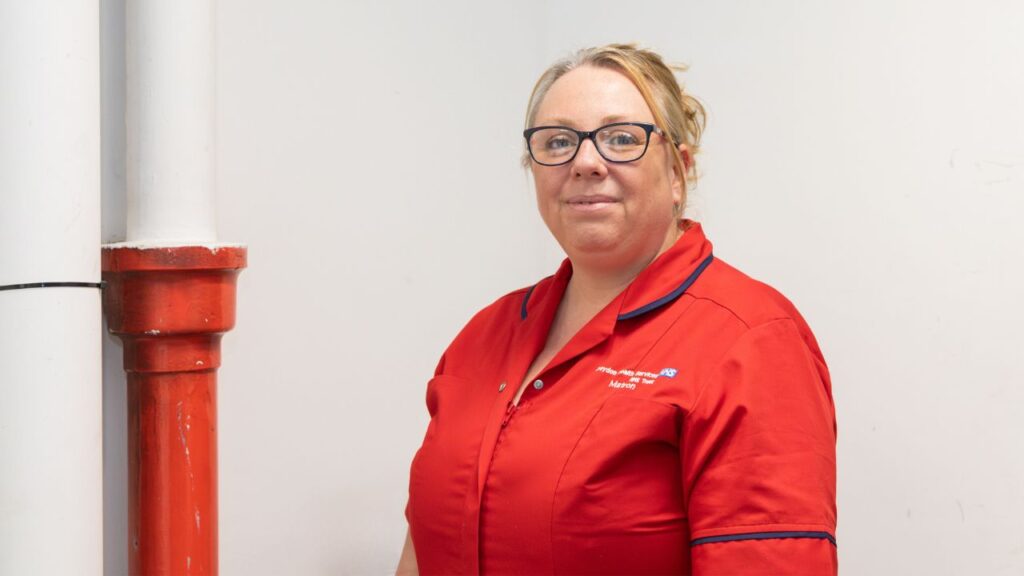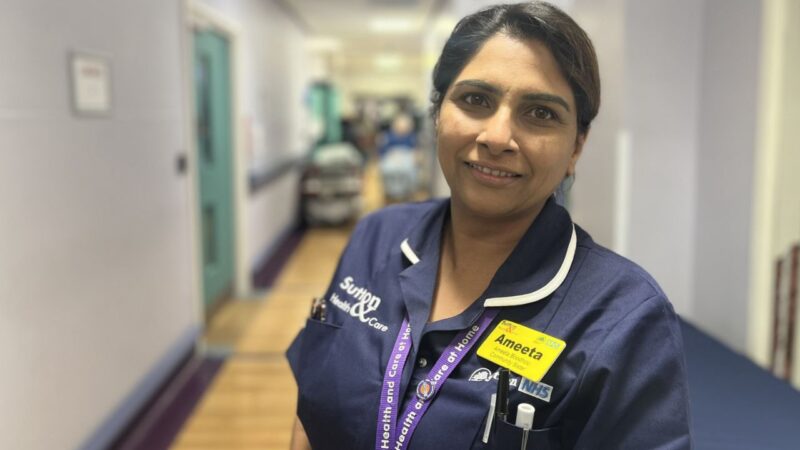“It’s just a real honour, when people let us into their own homes to treat them. And to know we’re working as one team across the trust’s hospital and community services, helping to improve the flow of patients and keep people at home when the hospital is under extra pressure.”
As winter places increased demand on hospital emergency departments, urgent community responders like Caralyn Miller are at people’s door within two hours of a call, treating them from the comfort of home.

The service operates across all six south west London boroughs. Responding to more than 1,300 urgent calls each month, it brings the rapid care that helps prevent hospital admissions.
Says Caralyn: “We endeavour to get to patients within two hours of a referral and complete a full clinical assessment including blood tests. We have nurse prescribers on our team and access to a medicine cupboard. So, if patients are not able to get antibiotics or pain relief, for example, from their GP that day, we are able to take it to them ourselves.”
Since December 2024, urgent community response services in south west London have been operating on extended hours, from 8am to 11pm, seven days a week. In Sutton and Richmond the service operates 24/7. This follows more than £200,000 extra investment in to help alleviate pressure through the busy winter period.
Residents are referred by their GP, care home or NHS 111 but can also contact the service direct. More than 90% of calls receive a response within two hours.
This allows many patients to avoid the stress and potential disruption of an ambulance transfer, emergency department wait, or hospital stay.”
Ameeta Boodhoo (main image), is an urgent response nurse working for Sutton Health and Care. She said: “By responding to urgent needs within two hours, we can quickly assess their situation and develop a personalised care plan. This allows many patients to avoid the stress and potential disruption of an ambulance transfer, emergency department wait, or hospital stay.”
Anyone aged 18+ can use the service, but it is particularly valuable for older and vulnerable people. Patients are seen for nine conditions, including falls, where there is no serious injury, issues with catheters, confusion and pain relief as part of end-of-life care.
Kyley Parfitt is a district nurse team leader, working for Your Healthcare CIC, which delivers the service in Kingston. While her role involves scheduled visits, she also responds to urgent community calls as needed.
She explained: “We’re called out for urinary tract infections (UTIs), chest infections, wound care and falls. I think of us as a ward with no walls because there’s nothing that comes in that we don’t adapt to.
“A big part of our day is palliative care. For example, I went on a visit, which should have been quite routine, but I realised that the lady was agitated and entering the end of her life. We contacted the GP, did a prescription for medication to control her agitation and her pain and were back there within two hours.
“Having a fast-turnaround, 24-hour nursing service meant she could pass away peacefully at home, as was her choice. We always say in our job we only have one chance to get that right.”

Each borough team is managed by a lead nurse, experienced in this area of care – many also work on virtual wards or hospital discharge teams. They can make rapid decisions and allocate the right person to the call, which could be a district nurse, paramedic or other healthcare professional, depending on the nature of the issue.
Says Caralyn: “Croydon’s urgent community response and virtual wards teams work closely together. The virtual ward team visits patients in the morning and in the afternoon we work together to respond to new urgent community calls that come in. We can get up to 20 urgent response calls a day on top of our virtual wards caseload, which can range between 60 and 100 patients. Where needed, we also make repeat visits to people we have seen the previous day.”
The visits aren’t just about tackling the immediate health needs of the patient. They are a chance to see what else can be put in place to help with their daily life and maintain independence. This could mean a referral to social care for extra support or input from occupational therapists with equipment to prevent falls, all helping to avoid future problems that might involve a hospital visit.
Says Ameeta: “We understand that home is where our patients feel most comfortable and supported by their loved ones. By enabling them to receive care at home, we empower them to maintain their independence and overall wellbeing.”
Kyley gives an example: “A gentleman had a burn to the hand and called an ambulance. The paramedics saw to the wound, but he needed our help because he had a catheter.
“During the visit we realised he wasn’t managing at home, so we made a social care referral. He was struggling to get in and out of bed and on and off the chair, so then it was about putting in equipment to helps with that. We’re a multidisciplinary team working to ensure that we get the best person to each patient.”
Our emergency departments have been very busy throughout winter, and we’ve been working hard with our partners to ease the extraordinary pressures we’re under.”
Dr Amir Hassan, emergency department consultant at St Helier Hospital explained the wider benefits of the service: “Our emergency departments have been very busy throughout winter, and we’ve been working hard with our partners to ease the extraordinary pressures we’re under.
“Treating people in their own homes and preventing attendance to the emergency department, when it’s safe to do so, takes some of the strain off our services and helps us to focus on our sickest and most seriously ill patients who need hospital care.
“People often feel more comfortable when receiving treatment in their own homes, so caring for them in this way can also make it a less stressful experience and help them to maintain their independence.”
The urgent community response service is one of the hundreds of things the NHS and social care organisations in south west London are doing to help people stay well this winter – we’re sharing 10 points from the winter plan.
